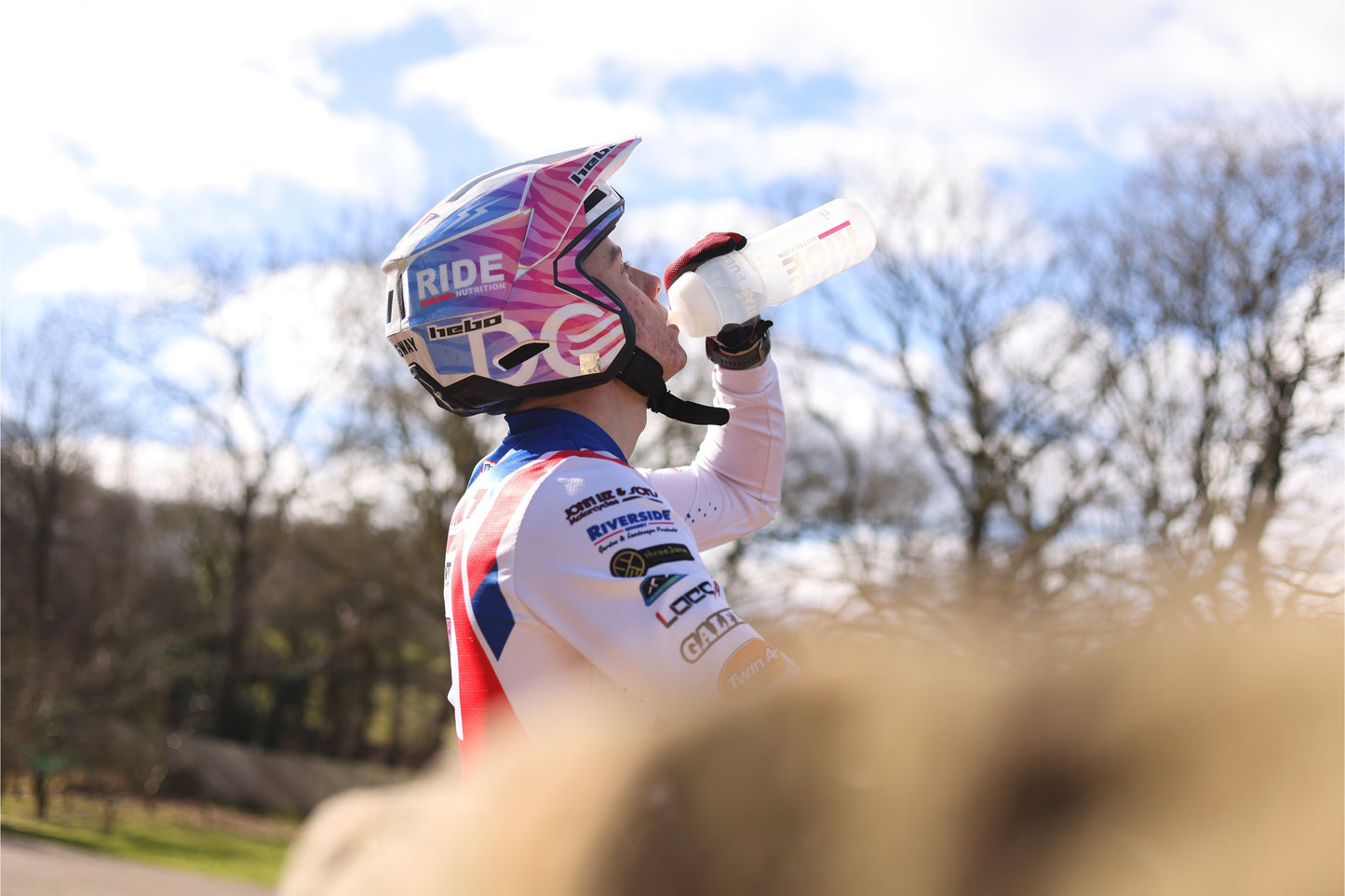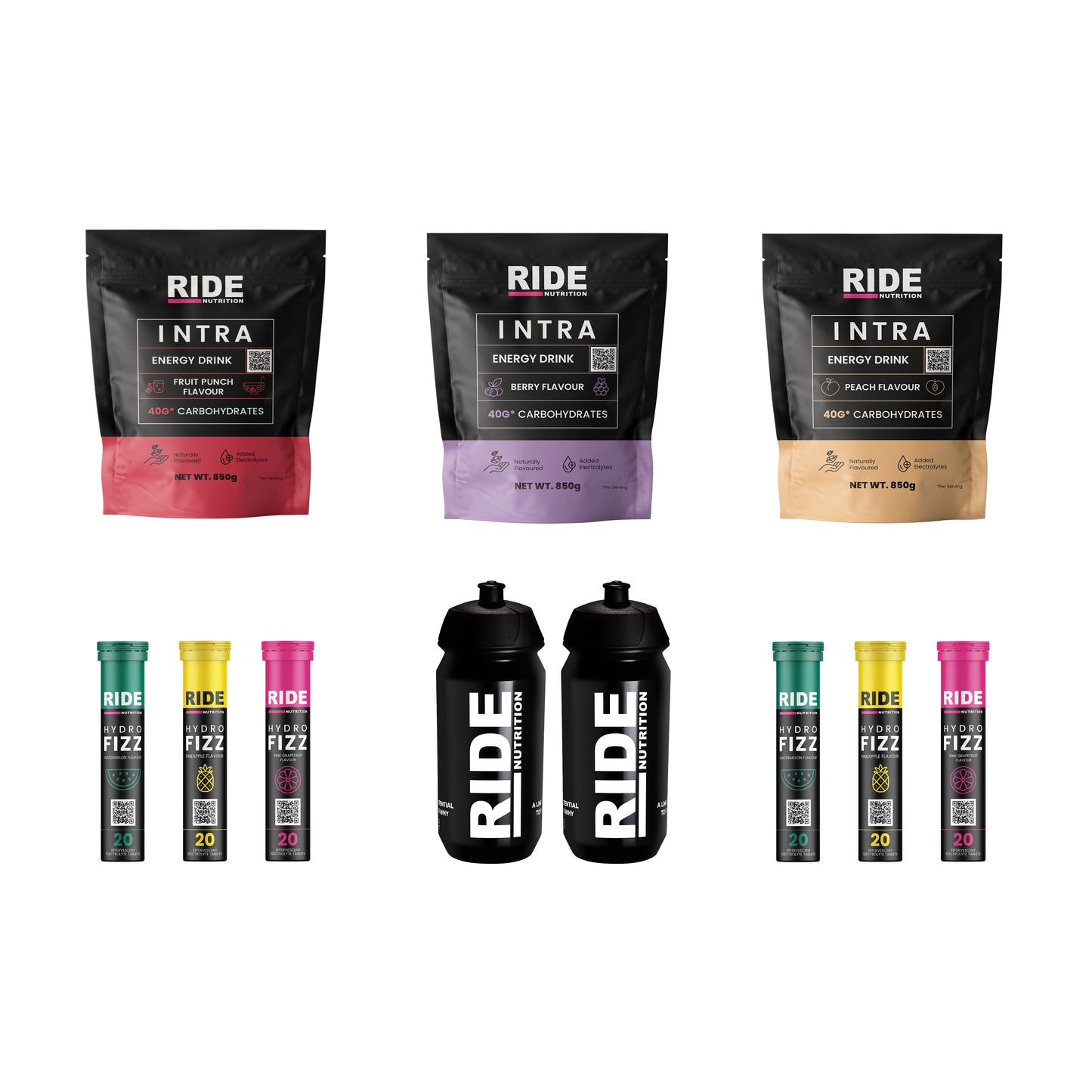
Glucose & Glycogen
Did you know that glycogen is the most efficient fuel source for our body to use during exercise? If you have read our article covering the importance of carbohydrates, you will know that glycogen is essentially the storage of excess glucose in the liver and muscles.
But where do we get the glucose from in the first place?
The answer to that question is carbohydrates!
Depletion Of Glycogen Stores
As intensity increases, so too does muscle glycogen usage. With this being said the glycogen stores in our muscles and liver are limited. It can be expected that stores will only last for roughly 60 minutes of exercise before levels drop, depending on the exercise intensity (Ivy, 2000).
When glycogen stores are low the body then relies more heavily on the oxidation of fat stores to generate energy. However fatty acids are a much more slowly released energy store, hence the onset of fatigue when training at high exercise intensities with depleted glycogen levels (Margolis et al., 2019).
Through simple and effective carbohydrate fuelling plans we are able to minimise the onset of significantly low glucose / glycogen levels, enabling us to work at higher exercise intensities for prolonged periods of time.
Before
Carbohydrate Loading
In order to maximise muscle and liver glycogen stores we recommend to increase daily carbohydrate intake to 10-12g per kg of body mass 36-48 hours prior to the competition.
Pre-event Meal
In order to top up those glycogen levels further, consume a carbohydrate rich meal 1-4 hours prior to competition. Aim to eat 1-4g of low GI carbohydrates per KG of body mass in this final ‘meal’.
This meal should be low in fats and proteins as these macronutrients take much longer to digest and may result in gastrointestinal stress during exercise.
We recommend to eat low GI carbohydrates before exercise as low-GI foods cause a lower insulin response compared to high-GI foods. This means huge blood glucose spikes and subsequent slumps are avoided before exercise.
Additionally insulin inhibits fat oxidation during exercise, therefore the consumption of low-GI foods is thought to allow for increased utilisation of fats and lower carbohydrate usage which helps to preserve glycogen stores (Febbraio et al., 2000).
Pre-event Snack
Aim to consume a low GI carbohydrate rich snack 60 minutes prior exercise if this suits.
*Snacking 60 mins prior to exercise may not be suitable for everyone. This is due to the rise and subsequent insulin induced fall in blood sugar to significantly low levels so close to the start of exercise (Little et al., 2009). We recommend to practice in training the strategy you intend to use during competition, as responses to pre-exercise feeding varies between individuals.*
During
- Note that If you are exercising for 90 minutes or less, fuelling during isn’t necessary given that you have fuelled up correctly beforehand (Burke et al ., 2011). If you haven’t eaten a carbohydrate rich meal / snack before then eating during a shorter (<90 minutes) exercise session is advised.
Fuelling during exercise
To ensure adequate glucose availability aim to consume 40-60g of high GI carbohydrates for every hour of exercise completed. This guidance provides athletes with a base figure to trial and test during training – slight tweaks may need to be made in accordance to athlete weight and training intensity.
As noted, high GI carbohydrates should be ingested during exercise as they cause a rapid increase in blood glucose levels which can be quickly absorbed into the muscles for energy.
When choosing a carbohydrate drinks mix, lookout for options delivering multiple transportable carbohydrates - maltodextrin and fructose. If you haven't already, check out our INTRA Energy Drink Mix range.
Different proteins are used to transport such carbohydrates simultaneously, thus resulting in an increased rate of carbohydrate delivery and absorption at the muscles (Potgieter, 2013). Upwards of 90-120g per hour can be absorbed and delivered to working muscles when using a multiple energy substrate compared to using maltodextrin alone. With this being said, when ingesting higher levels of carbohydrates per hour, the chances of experiencing gastrointestinal stress increases.
After
Replenish glycogen stores
Aim to consume 1.2g (per kg of body mass) of high GI carbohydrates post exercise to replenish depleted glycogen stores.
Again greater levels of insulin secretion following the ingestion of high GI carbohydrates stimulates glycogen formation, which therefore allows for an increased rate of glycogen resynthesis (Burke et al., 2017).
It's a common misconception that high GI carbohydrate drink mixes are only to be consumed during exercise. Whilst this is the main application, such drink mixes are also of great use when athletes need to replenish glycogen stores immediately in between sessions or after races when food availability may be limited.
If you're on the lookout for a great tasting dual carbohydrate source drinks mix, make sure to check out our Intra Energy Mix range today.
For more information on low vs high GI carbohydrates and examples of each, please read our article.
References
Burke, L.M., Hawley, J.A., Wong, S.H. and Jeukendrup, A.E., 2011. Carbohydrates for training and competition. Journal of sports sciences, 29(sup1), pp.S17-S27.
Burke, L.M., van Loon, L.J. and Hawley, J.A., 2017. Postexercise muscle glycogen resynthesis in humans. Journal of Applied Physiology.
Febbraio, M.A., Keenan, J., Angus, D.J., Campbell, S.E. and Garnham, A.P., 2000. Preexercise carbohydrate ingestion, glucose kinetics, and muscle glycogen use: effect of the glycemic index. Journal of Applied Physiology, 89(5), pp.1845-1851.
Ivy, J.L., 2000. Optimization of glycogen stores. Nutrition in sport, 7, pp.97-111.
Little, J.P., Chilibeck, P.D., Bennett, C. and Zello, G.A., 2009. Food for endurance-the evidence, with a focus on glycaemic index. CAB Reviews: Perspectives in Agriculture, Veterinary Science, Nutrition and Natural Resources, 4(058), pp.1-13.
Margolis, L.M., Wilson, M.A., Whitney, C.C., Carrigan, C.T., Murphy, N.E., Hatch, A.M., Montain, S.J. and Pasiakos, S.M., 2019. Exercising with low muscle glycogen content increases fat oxidation and decreases endogenous, but not exogenous carbohydrate oxidation. Metabolism, 97, pp.1-8.
Potgieter, S., 2013. Sport nutrition: A review of the latest guidelines for exercise and sport nutrition from the American College of Sport Nutrition, the International Olympic Committee and the International Society for Sports Nutrition. South African journal of clinical nutrition, 26(1), pp.6-16.

